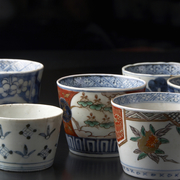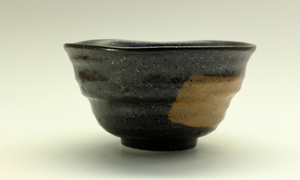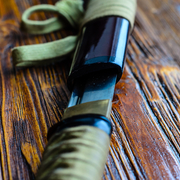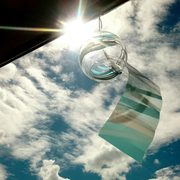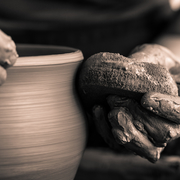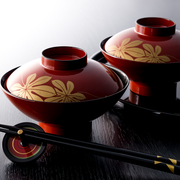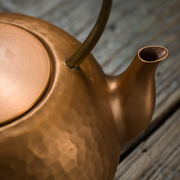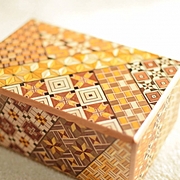Japanese ceramic art is the activity of forming clay and producing vessels using a high temperature kiln.
Clay is the blend of organic materials and rocks produced by volcanic eruption which was crushed over years.
There are broadly 2 types of ceramics: “ceramics”, which are mainly made of soils and make dull sound when you hit it, and “porcelain”, which are mainly made of rocks and make metallic high sound when you hit it.
Do you know about the uniquely developed ceramic art culture in Japan, compared with ceramics produced across the world although you can find it everywhere in the world.
The Ceramic Artist, who devoted himself to re-create the mysterious National Treasure “Yohentenmoku-Chawan (Tea bowl)”
There is a national treasure ceramic, which is said that only 3 of it exist in Japan.
That is called “Yohentenmoku-Chawan”, whose design shows space-like pattern inside of the bowl.
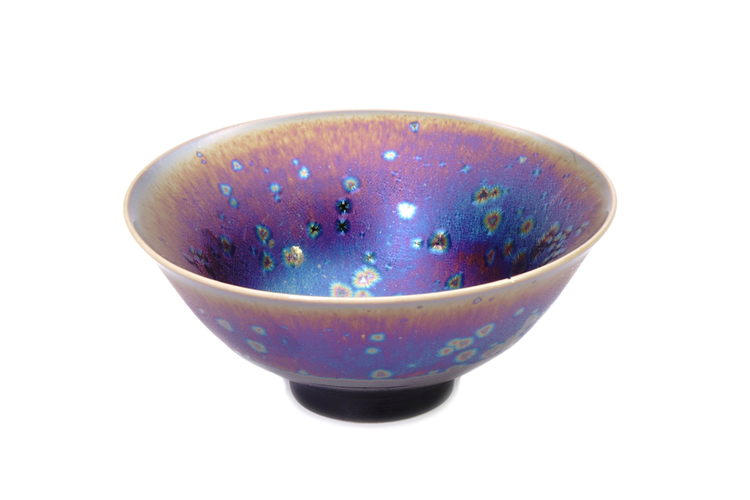
This tea bowl is said to be created 800~900 years ago in China, but no details about the creator and the manufacturing process are known, which made its presence mysterious.
A few years ago, antiques appraisal TV program introduced said-to-be 4th “Youhentemoku-Chawan”.
However, the appearance of the ceramic artist who raised an objection might have made the name known to many people.
That ceramic artist is Mr. Sokichi Nagae, who is the 9th master of the pottery in Seto-city, Aichi prefecture with the history since the Edo period(1603-1867).
His father, the former master, started researching of the manufacturing process and re-creating, and since 1995, when his father passed away, Mr. Sokichi Nagae, the 9th master, has taken over the father’s challenges.
His solid passion brought him to “Kenyou”, which is the kiln where the bowl was created, in Fujian Province, China many times.
He has worked on the intensive research over 20 years, having had combustion experiment at the climbing kiln with the same structure as that of the production time, having imported 80 ton soils from “Kenyou”.
He is the very ceramic artist, who has extraordinarily personal passion towards “Yohentenmoku-Chawan”.
According to his re-creating research, he discovered an ore called “Hotaru-ishi (fluorite)” produced the space-like luster.

However, he has not reached to completion of re-creation as he himself is convinced, which makes Mr. Sokichi Nagae carry on the challenge still now.
By the way, the mentioned said-to-be 4th “Yohentenmoku-Chawan” was evaluated as its replica as Mr. Sokichi Nagae pointed out.
The History of Ceramics in Japan
In Japan, “Jomon pottery”, which was produced 12,000 years ago, was found as the first ceramics, which means Japan has the longest ceramics history in the world.
Initially, “Jomon pottery” was processed to make living tools, but the trace of its complicated form and the pattern with a rope show it appearance as the first work of art in Japan.
In the Asuka period (from the second half of the 6th century to 7th century), the techniques of potter’s wheel, a kiln and a glaze came from Korea.
In the Kamakura period(1185-1333), the pottery with distinctive features, called “Six Old Kilns” was established, while the blend of techniques from China and Korea, and Japanese unique ways of expression grew the ceramics culture.
“Six Old Kilns” refer to “Tokoname-gama” and “Seto-gama” in Aichi prefecture, “Echizen-gama” in Fukui prefecture, “Shigaraki-gama” in Shiga prefecture, “Tanba-gama” in Hyogo prefecture, and “Bizen-gama” in Okayama prefecture.
The aspects of art bloomed in the Azuchi-Momoyama period (1568-1600).
Since Sen no rikyu(千利休), who is a special master of the tea ceremony during Azuchi-Momoyama period, asked Chojiro, who was the ceramics artist in Kyoto, to create a tea bowl for Wabi-cha, which is a style of tea ceremony, the culture of “Chano-yu (tea ceremony)” became popular and developed its designs.
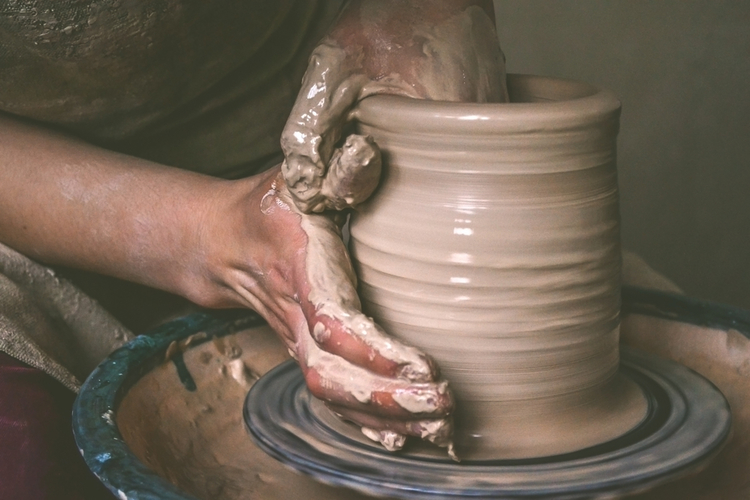
In the Edo period (1603-1867), colorful and artistic works were produced.
The first porcelain was “Imari-yaki”, which was said to be created by a Korean potter in Arita-cho, Saga prefecture.
Fine painting and coloring got popular and the export of those works to Europe started.
Being aware of foreign countries, ceramics had more gorgeous painting, which developed the value as luxury works of art.
In the Meiji period (1868-1912), the export of ceramics was strengthen, which led it to one of the most significant industry of Japan, but gradually, the boom of Japonisme got dying down.
In the development of ceramics, two streams occurred; one is for practical use mass-produced by industrialization, and the other is for ornamental purposes.
In 1926, Muneyoshi Yanagi, a philosopher, advocated “Mingei-movement” concerning about the decline of handwork culture across Japan.
He named the daily necessities produced by the unknown craftsmen as “Mingei”, and declared its profound beauty same as works of art.
In the same period, Nihon Toki, the predecessor of Noritake, which has been the world-wide ceramics brand, and Toyo Toki, the predecessor of TOTO, which is well-known as a toilet-maker, were both formed.
With twists and turns, ceramics culture has been alive continuously over 12,000 years.
The Ceramic Works with a New Image beyond the old-fashioned
You may have the image to the traditional ceramic works as old-fashioned and hard to understand generally.
However, there are eye-catching beautiful works, pretty works inspired by nature as such among the famous works.
Kakiemon, the ceramic artist in Saga since the Edo period, established the Kakiemon-style, which refers to “Nigoshide” colored, which is unique milky white color, porcelains painted of flowers and birds with a plenty of margin.
That style had huge influences abroad.
There are many pictorial works, which have vivid and fine patterns of flowers on the milky white background.

Hazan Itaya, the ceramic artist from the late Meiji period to the middle of Syowa period (1926-1989), developed the technique which produced fantastic effects like wearing silk veil by glazing to create matte texture on the whole.
This technique is called as “Hokosaiji”, which represents his works.
Its pale coloring is impressive, blended ancient ceramics from China, art nouveau style from the West, and quiet and fine Japanese paintings.
The characteristic of plastic clay and painting skills made free and colorful expression possible.
Ceramics as Modern Art
While the world of ceramics seems to fall into decline, emerging ceramic artists are coming up.
Mr. Akio Niisato, born in 1977, created “Koki (Luminescent Vessels)” series, which features its fantastic looks that the light can be seen through. His works are popular across the world.
Mr. Keigo Kamide, born in 1981, created “Banana Husa Iroe-Umemon (Bunch of Bananas with Design of Apricot)”, which expresses graceful and matt texture of bananas by Kutani-yaki (Kutani porcelain).
This work is preserved in 21st Century Museum of Contemporary Art, Kanazawa prefecture.
The pottery’s brands used to define the styles of works, but nowadays each ceramic artist as individual attracts attentions.
With traditional techniques, innovate works with new tastes have been produced.
Ceramic Art Experience around you
You can easily find pottery class open everywhere.
Among industrial arts, it can be said ceramic art has spread the most.
Once you actually try, you will be surprised how profound it is.
That is because you never expect the finishing until the very end of process. Components of the soil, the blend of glaze and firing happen to create unexpected finishing beyond your techniques.
That attracts people to enjoy pottery.
Many reasonable vessels are available even in 100 yen shops (It is a kind of One-dollar store, and we can purchase household goods), but you feel attached to the ones you create by yourself.
Why don’t you try pottery, which is also practical, to present your imagination?
Visiting pottery markets, which are held in the ceramics region every year, helps you to feel the world of ceramics.
Find your favorite and use it. That is the nearest way to discover its charm.
3 Major Pottery Fairs
- Toki Mino-yaki Fair / Toki-city, Gihu
Every May 3rd – 5th
- Setomono Fair / Seto-city, Aichi
Every September 2nd Saturday and Sunday
- Arita Pottery Fair / Saga
Every April 29th – May 5th



